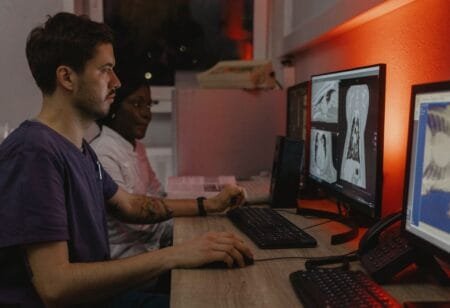The 2003 report of the patient mobility reflection process represented a political milestone by recognising the potential value of European cooperation in helping EU Member States to achieve their health objectives. The Commission set out its response to the report of the reflection process in Communication COM (2004) 301 of 20 April 2004.
Advertisement
The primary mechanism for taking forward the work set out in the Communication was to establish a High Level Group on health services and medical care. This High Level Group started work in July 2004. It brings together experts from all the Member States and it works in seven main areas as follows:
Cross-border healthcare purchasing and provision: Work is focused on a deeper analysis of the financial impact and sustainability of cross-border healthcare, developing a framework that could be used for cross-border healthcare purchasing, studying the reasons for mobility and the need for purchasing care abroad, providing information to patients on quality, safety and continuity of care as well as on patients’ rights and responsibilities, considering liability issues in cross-border care, and gathering information to monitor cross-border healthcare purchasing and provision.
Health professionals: Work should be taken forward through exchanging information on continuing professional development to ensure quality; ensuring that basic data on migration of health professionals is provided by all Member States; surveying the impact of migration out of Member States; and sharing information on recruitment practices in order to assess whether common principles could be developed;
Centres of reference: Some principles have been developed regarding European centres of reference, including their role in tackling rare diseases or other conditions requiring specialised care and volumes of patients and some criteria that such centres should fulfil. Options and procedures for designating European centres of reference for limited periods of time at European level based on agreed lists of pathologies, technologies and techniques are also being developed. The High Level Group will work towards a common approach which could then be implemented through pilot activities;
Health technology assessment: The usefulness of establishing a sustainable European health technology assessment network has been recognised. Such a network should address methods for developing common core information packages, methods to support transferability of assessments, methods for identifying and prioritising topics and commissioning reports, tailoring common core information to national health policy processes and sharing methodologies, expertise and practice issues. This network could be established initially through the public health programme;
Information and e-health: An overall health systems information strategy in a European context is needed, considering mobility of citizens and availability of Europe-wide e-health services. Future work should focus on developing such an information strategy and on outlining activities for the implementation of the e-Health Action Plan, looking at the information which should be available for patients, professionals and policy-makers; and looking at the appropriate structures for cooperation on information and e-health;
Health impact assessment and health systems: The European Union’s impact on health takes place largely through policies other than those specifically related to public health. Work is required to ensure a coherent approach to evaluating the impact on health of other Community policies. This group, in partnership with the European Observatory on Health Systems and Policies, has developed a methodology and practical tool for people working on Health Systems Impact Assessment.
Patient safety: Health care interventions, although intended to benefit patients, may in some cases cause harm. An EU patient safety network or forum, working with other international organisations, could provide focus for efforts to improve the safety of care for patients in all EU Member States, through sharing information and expertise.
The High Level Group has also contributed to other work relevant to health services and medical care, including the open method of coordination on healthcare and long-term care as outlined in Communication COM(2004) 304. The High Level Group reports annually to the EPSCO Council (Employment, Social Policy, Health and Consumer Affairs).
Documents of the High Level Group
Documents of the High Level Group’s working groups
Source: European Commission






